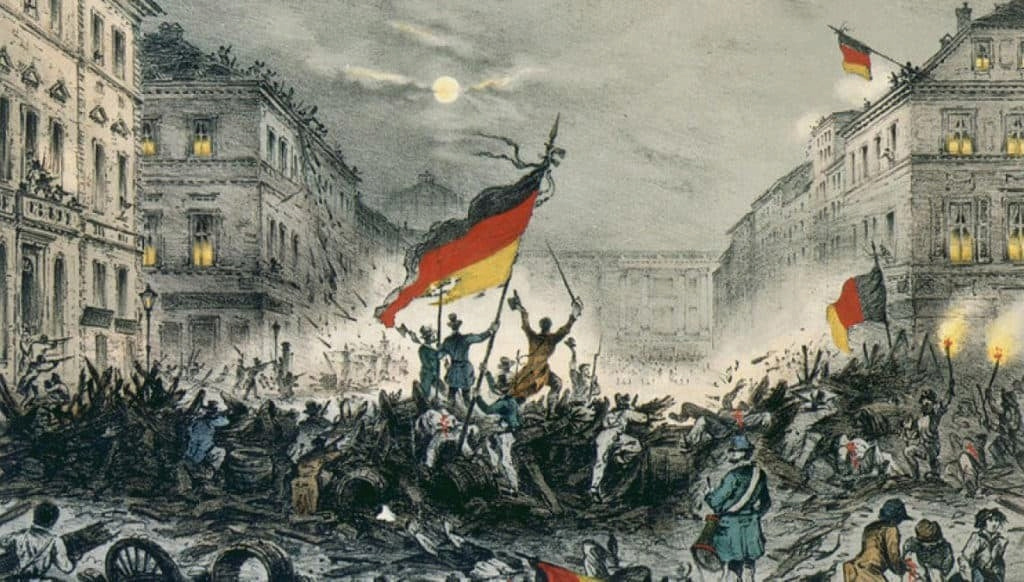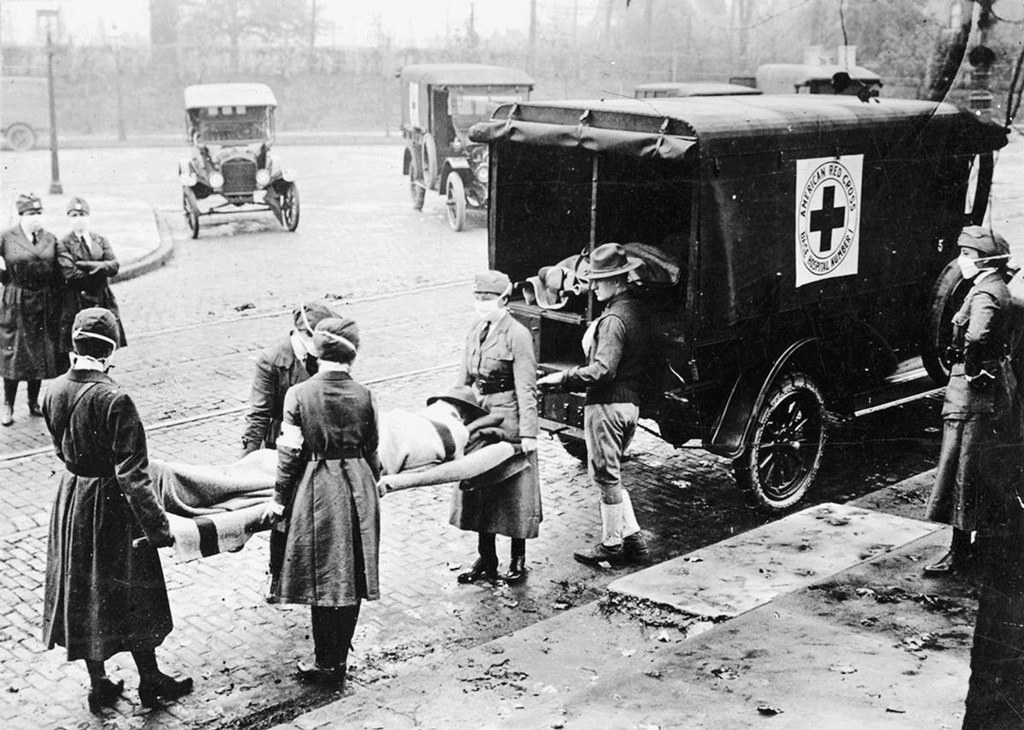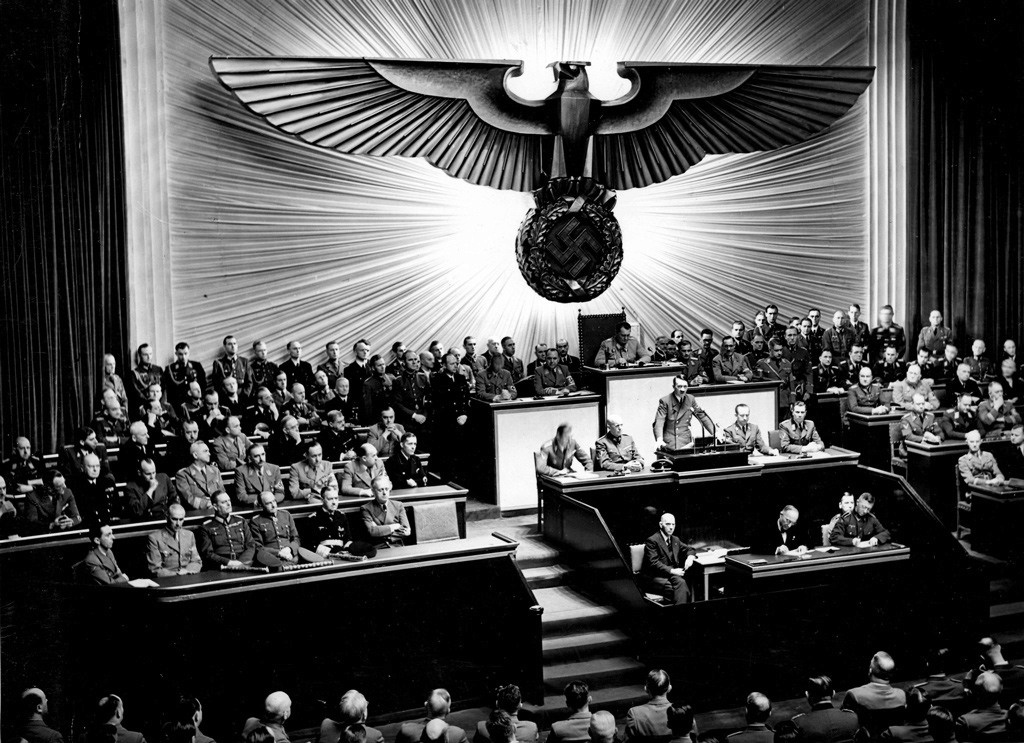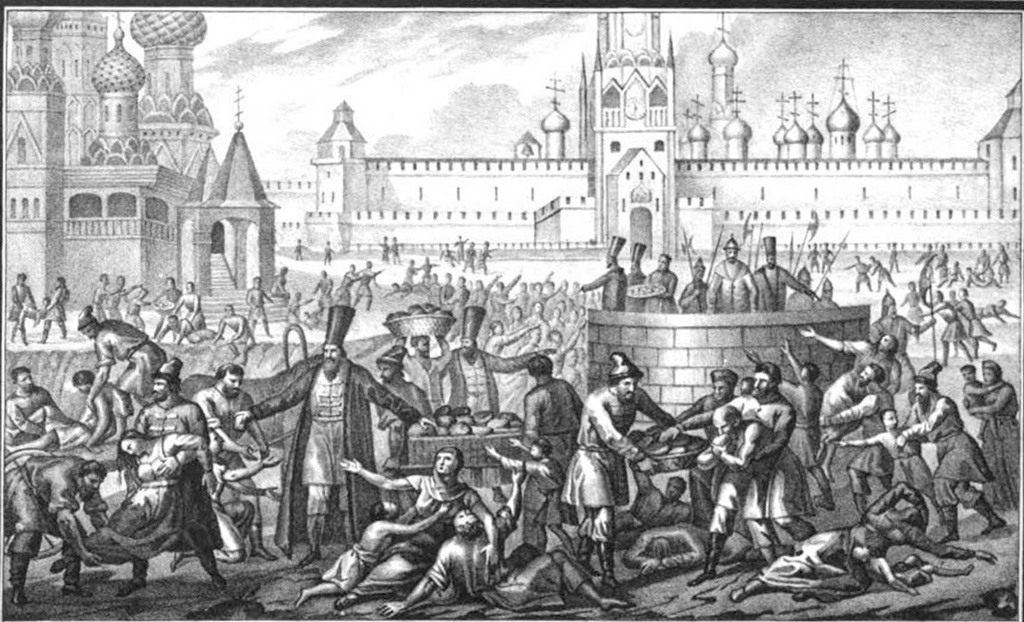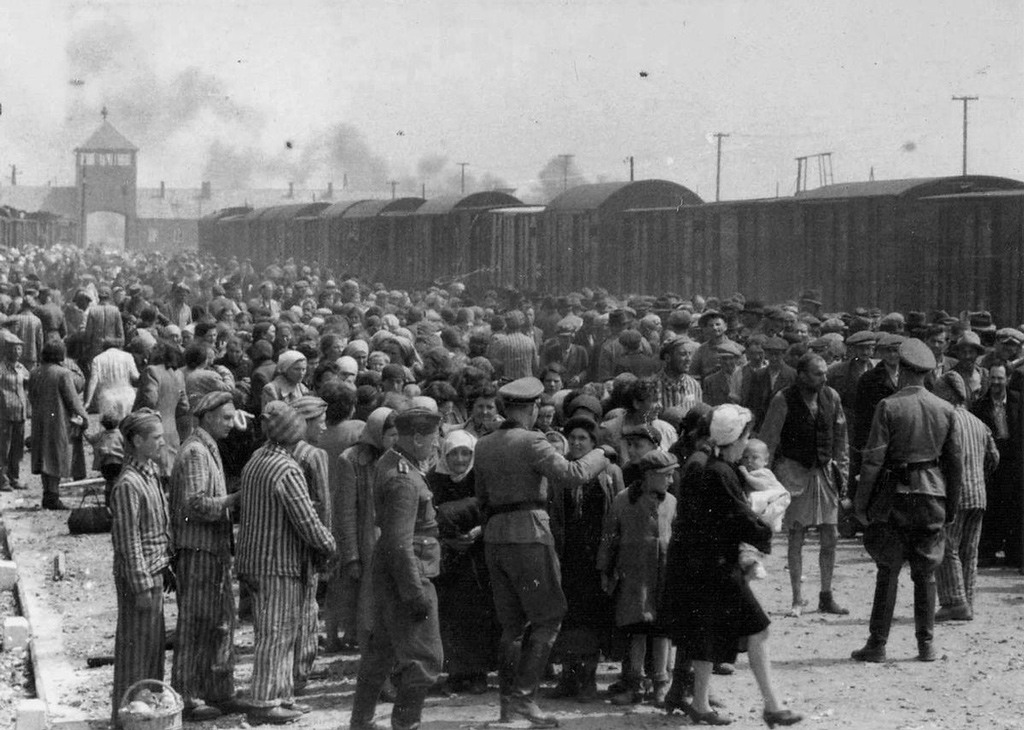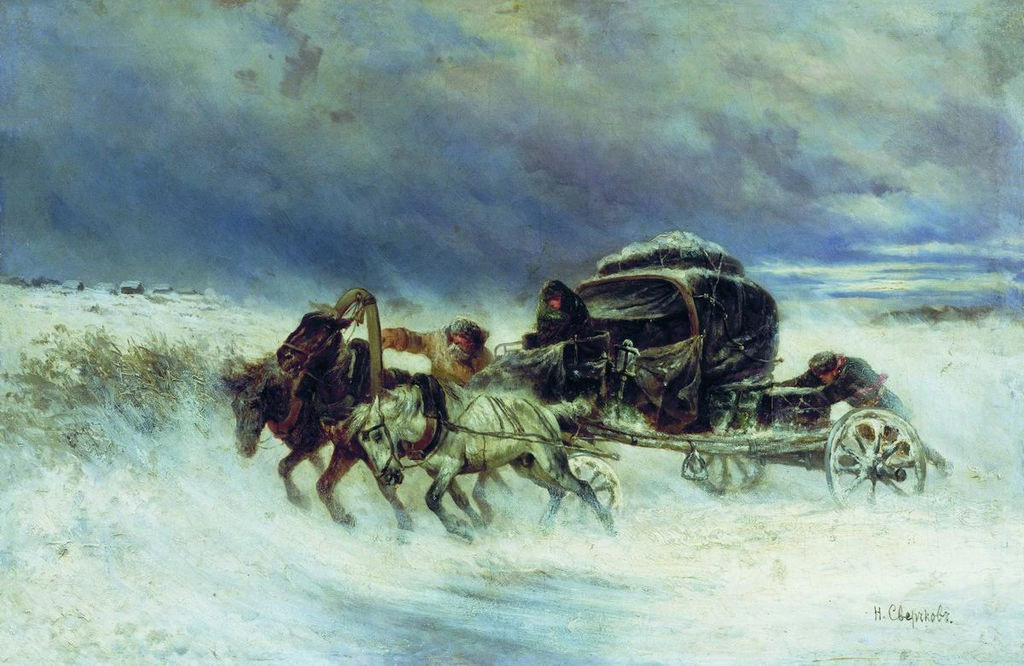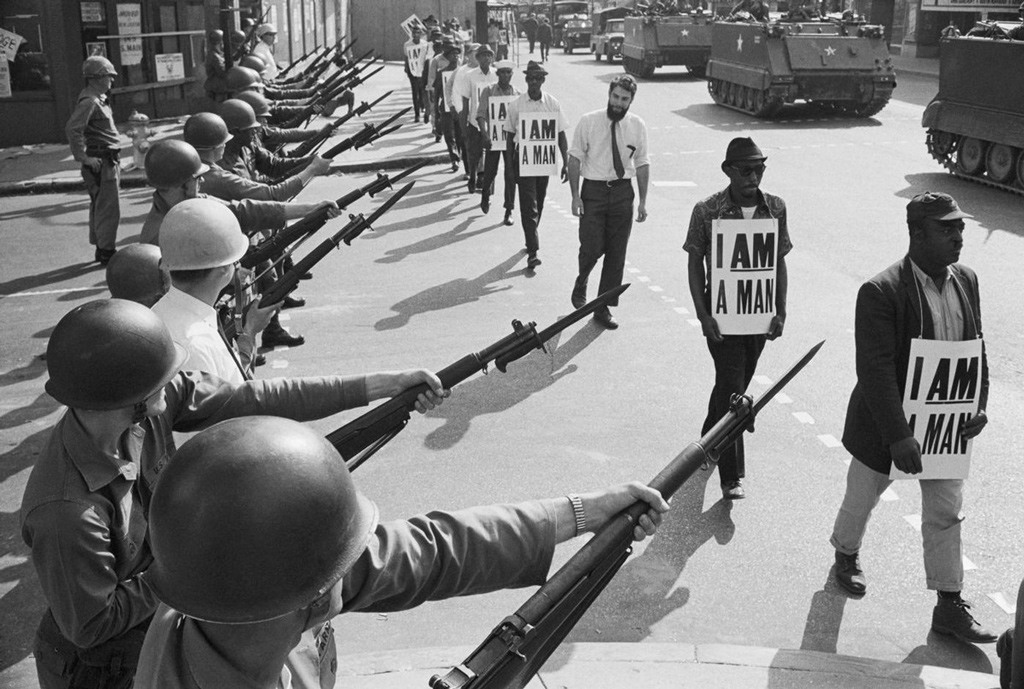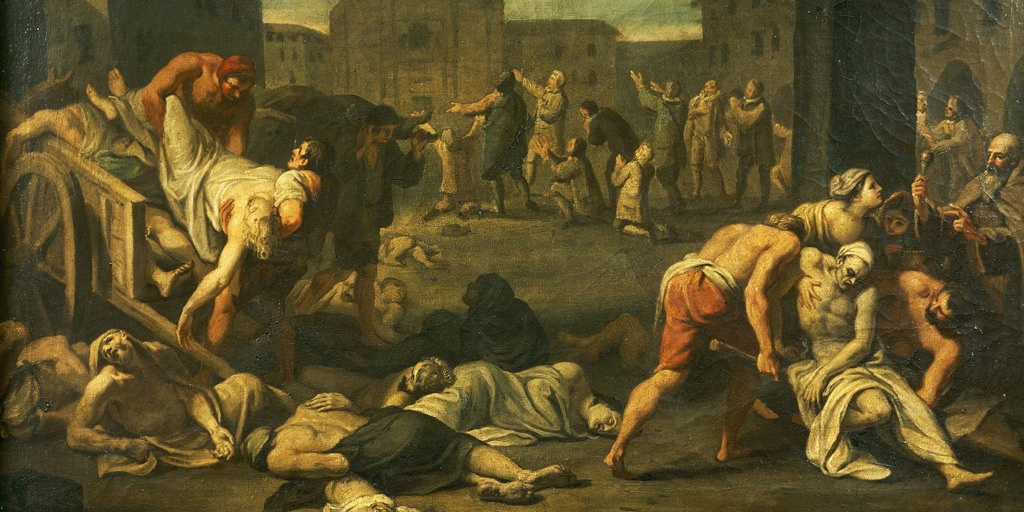the worst times to live in throughout human history
There is no doubt that life is an adventure running on a long path filled with both sad and happy moments. By going back through the pages of history, we can confirm this proposition by standing on times of peace and prosperity that humanity has enjoyed, and other times, to say the least, that they are not contemporary with. Only unfortunate.
In our article on our website “Your Revenue Knowing”, we have collected 15 of the worst times and epochs for a person to be in, according to the events in which they took place in descending order from bad to worse:
16. The year 1576 took place in the Antwerp Agitation, a bloody and separate event that would have a long-term impact on the whole of European history:
In November 1576, the Spanish soldiers who were stationed in the Belgian town of Antwerp rose up. These men had been far from home fighting against the Dutch in the name of the Spanish king, but the problem was that they had not been paid for several months.
These soldiers were frustrated, so they rose up in a state of frenzy, and for three continuous days, they wreaked havoc in this historical city, killing a large number of its citizens. In all, historians believe that about 7,000 people died in these events: many were either thrown into the aqueducts or simply fell by the sword, but this event known as the "Antwerp rampage" would have a wider impact.
The events of that day led Europe to a major economic crisis. Antwerp ceased to be a great economic power, allowing Amsterdam to emerge on the European stage. Moreover, the Spanish soldiers, and the Spanish people as a whole, came to be seen as ruthless savages.
This "black" legend was to last for centuries, greatly affecting Spanish history as a whole, both internally and externally.
According to Harold Cook, Professor of History at Brown University, the year 1576 was indeed a terrible year to live in, as it marked the beginning of the “Holy League” in neighboring France to Spain, and by uniting them, France and Spain caused the entry of the whole European continent into An era of poverty, insecurity, and widespread violence.
15. In 1783, millions of people perished due to famine in large areas of Asia, all due to the eruption of a volcano thousands of kilometers away:
Millions perished under the clutches of famine in India after the eruption of a volcano thousands of kilometers away.
In 1783, the volcanic Laki region in Iceland erupted. Volcanoes threw tons of volcanic ash and some other volcanic particles into the Earth's atmosphere, the consequences of which affected the whole world, and India had the largest share of damage.
India was then reeling from an abnormally cold winter, and due to the eruption of Icelandic volcanoes, the northern parts of the globe did not have a real summer in 1783. Alaska, for example, had the coldest winter in its history in 400 years, fortunately he did not live There are only a few people, but this cannot be said of India, which had a large population, especially in its northern regions.
It is estimated that about 11 million people died in India as a result of the famine between 1783 and 1784, in what became known as the "Kalisa Famine", in which the region (Delhi) suffered the most.
Then the following year came to be hotter than usual, as the presence of that huge amount of sulfur dioxide in the earth’s atmosphere meant that vital seasonal rains never came that year, and the high temperatures experienced by the northern India region meant the drying up of lakes and rivers, which To make matters worse.
It took two long years for the waters to return to normal, and the Indian climate returned to normal.
14. The year 1848 may seem like a pivotal year in history, but it is a year full of violence, revolutions and famine:
The revolutions that took place in 1848 led to a state of instability throughout the European continent.Photo: Wikimedia Commons
During the summer and autumn of 1848, the European peoples rose up and that year became known as the “year of revolutions,” with voices and movements calling for change in several countries, the most famous of which were France, and the states that would later become Germany, Denmark, Austria, and Hungary.
In all, historical records show that 50 different nations were somehow in a state of instability. Hundreds of thousands of people were killed, and the streets of the most famous historical capitals in Europe were stained with their blood, but whether it was really worth the effort that went into it remains a matter of historical debate.
The monarchy in our Persians certainly fell again, and many of the middle classes in Europe were more and better represented by their governments, but in many places where the old regimes clung to power, they made only a few small concessions.
Without this, the rise of invasive nationalism would boil over several decades later, something that saw the light and was eventually unleashed in World War I. Among the results of the revolutions of 1848 was the birth of the powerful German Confederation.
The year 1848 also represented the height of the Irish famine, because of which hundreds of thousands perished, and millions left their homes forever.
13. The year 2001 ended a period of relative peace and stability, a year that will be immortalized in history, not only for the Americans, but for the peoples of the whole world:
The fall of the Berlin Wall in 1989 and the end of the Soviet Union represented the end of a period of tension, and led to the dawning of a new period characterized by peace and stability. Because of this, some historians predicted the “end of history”, because most of the major conflicts and rivalries of ideologies seem to have ended.
This considered relative peace and optimism collapsed on September 11, 2001, when the terrorist attacks on the World Trade Center towers in New York and the Pentagon in Washington left thousands dead in both cities, a butterfly effect that triggered several wars in The Middle East region, the most prominent of which was the war in Afghanistan following the invasion of the United States, and then the invasion of Iraq.
Many wars and instability still exist today in some regions of the Middle East, the cause of which can be traced back to 2001. The “war on terror” launched by the United States has also been blamed for the suppression of civil liberties in several countries around the world.
12. The year 1919 may seem like a year that brought peace to the world, but millions died during it due to the Spanish flu , and by reflecting on it, we can say that it sowed the seeds of the Second World War:
During its spread, it is estimated that the Spanish flu killed 50 to 100 million people.
The year 1919 was supposed to be a year of victory and peace, after all, the First World War, the bloodiest human conflict of all time, ended in November of the same year, and the peace treaty that was signed was also supposed to contribute to peace in the world at least for a century, but the Treaty of Versailles, as you know, did the exact opposite of what was expected of it.
The way the war ended came as a great shock to many in Germany, just as the idea that their nation was the only loser in this war, and from this document sowed the seeds of World War II, (Hitler) did not hesitate to exploit the widespread public discontent among his nation, and their anger resentment and their desire for revenge.
In addition, in 1919, Russia entered into a bloody civil war, a conflict that led to the emergence of the communist Soviet Union, and the end of the First World War led to radical changes in the map of the Middle East, changes that led to many problems because of which wars are still being waged. To this day.
Then there is, of course, the Spanish Flu, which although it peaked in 1918, also killed millions in 1919. It is estimated that about 500,000 Americans died from this pandemic in 1919 alone, and those who managed to survive the pandemic They were unable to toast to their health, for that very year the Eighteenth Amendment was introduced to the US Constitution, which prohibited the sale and consumption of alcoholic beverages.
11. The year 1520 was the year when the Europeans brought the disease of rootstock with them to the American continent, which caused the death of millions of indigenous people:
For the Spanish conquistadors, 1520 represented a year of victory and pride, and for the indigenous peoples of Mexico today, it was undoubtedly a dark year. In fact, many historians believe that this particular year was undoubtedly the darkest year in the history of the peoples of the two continents.
By this year, Hernas Cortés had reached the Americas about a year ago, but in April of 1520, another group of Spanish conquistadors arrived in Veracruz from Hispaniola, bringing with them a smallpox epidemic.
(Curtes) defeated these newcomers, but one of his men caught the infection, which means that the epidemic struck directly at the heart of the Aztec civilization.
Between 1520 and 1521, the radical caused the extermination of millions of indigenous people in this part of the American continent, some estimates suggest that 60 to 90 percent of the population perished.
In his diary, the Spanish monk (Motulinia) wrote: “Because the Indians did not know how to treat an epidemic...they were dying in droves, like bed bugs. In many places it happened that whole families perished without one surviving, and it was impossible to bury so many people.”
10. 1492 may have been a glory year for European explorers, but it was a very bleak year for the natives of North America.
Just as most history students know it, the year 1492 was the year in which Christopher Columbus set out for the Americas for the first time. Of course, he was not the first European to cross the Atlantic, but he had the greatest impact in history. According to some historians, 1492 was a disastrous year for the indigenous peoples of North America in what is today the United States.
(Columbus) and his men had brought with them from Europe to the New World the diseases and epidemics of the Old World. The indigenous population stood helpless in the face of these new diseases on them, and they began to fall prey to them by the millions.
It is believed that the year 1492 marked the beginning of the end for many indigenous peoples in the north of the American continent. Between that year and the beginning of the sixteenth century, about 90 percent of the indigenous peoples perished, and many civilizations were lost in the process.
As if that wasn't bad enough, there in Europe the financiers of Columbus' expedition, the Spanish King and Queen Ferdinand and Isabella, waged a brutal war on the Moors in Granada in 1492, during which they murdered, captured, enslaved or The deportation of 500,000 Muslims from Spain, many researchers say that the year 1492 was the beginning of the "clash of civilizations", which put an end to two thousand years of peaceful coexistence between different religions in Europe.
9. The year 1933 was bad for millions, from the unemployed Americans struggling in the midst of the Depression, to the suffering of Jews in Germany as they watched Hitler install a dictator:
Hitler declares war on the United States.
Photo: German Federal Archives/Wikimedia Commons
The year 1933 was a year of misery for many ordinary people around the world. Looking back, it is clear that this particular year represented the descent of many of the world's nations to oppressive dictatorial governments, which led to bloody wars.
For many Americans, it started with poverty, instability, and insecurity. The Great Depression that kicked off (Wall Street) four years ago reached its climax, during which about 15 million Americans were out of work—about 1 in 4 adults—and half of their banks collapsed. Country.
Things were not going well in Germany either. In February 1933, the National Parliament (the Reich) was exposed to a horrific fire, which was blamed on a Jewish man, and the Nazis used the incident as an excuse to tighten the screws on the Jews and tighten their grip on power. In March of that year, the “Hitler Empowerment Act” was passed that installed Hitler as dictator for life.
The year 1933 also saw the opening of the first Nazi camp in Dachau. Trade federations were banned, books were burned, and Jewish trade and businesses were seized, as well as the establishment of the notorious secret police Gestapo.
Meanwhile, in 1933, Japan exited the League of Nations, making 1933 the year the world embarked on an inevitable war.
8. The year 1316 was one of the darkest years for Europe, during which famines spread on a terrible scale:
The fourteenth century must have been a difficult time to be born and live in. If you were not fortunate enough to be born into a wealthy family, you had to endure a whole life of discomfort, insecurity, and misery, and what marked the year 1316 was the intensification of misery on the Especially people in England.
In that year, no agricultural crops were harvested, and this was repeated again in the year 1316, which made the famine spread, and a large number of people died of starvation while the sky became scarce with its rain that makes the crops grow.
Even King Edward II did not find bread to eat when he arrived in St Albans that summer, and before things got to this dangerous level, people were taking desperate measures in order to survive: the animals used in agriculture were slaughtered They are eaten from starvation, and the seeds that were stored for planting in the coming seasons were also consumed, measures that were very dangerous as they would have eliminated the entire fortunes of England in agriculture in the future.
Many sources reported that some peasants turned to cannibals in order to survive, and families abandoned their sons so that they could survive, a bitter reality that inspired the writing of the novel (Hansel and Gretel).
Finally, after two lean years, the weather returned to normal in the country in the summer of 1317.
7. The year 536 was the worst year in the worst century in human history, all because of the harsh climatic conditions, famines and the spread of wars:
The sixth century A.D. must have been a bleak time for a person to live in, and that even if he was born into a royal family, his royal lineage and wealth would not benefit him at all. This era is not historically referred to as the “Dark Ages” in vain and without good reason, and according to one study in 2018, one of the years was darker than all the years of that century, and this year was the year 536, during which it entered most of the European continent, the Middle East and large areas From Asia in complete darkness.
Some researchers showed that large volcanic eruptions had occurred at the time, perhaps in Iceland or El Salvador, which made the temperatures drop significantly due to the blocking of sunlight by volcanic ash for an entire year. In those times, people naturally interpreted these fearful atmospheres as punishment from God, and many of them likewise feared the imminent end of the world.
As if year-round low temperatures, lack of sunlight, and the impossibility of cultivating anything were not enough, large sections of the ancient world were plunged into bloody wars, which saw both parts of the Roman Empire fall, leaving the world in complete chaos and a state of disarray. Insecurity and stability.
Even if you somehow managed to survive the hell of the year 536, fate had in store for you a whole decade of misery to pass you by, as researchers believe that larger volcanic eruptions occurred in the year 540, add to this the outbreak of the bubonic plague epidemic in the year 541.
“This year was the beginning of one of the worst times to be alive, and it was the worst year ever,” says Michael McCormick, a professor at Harvard University.
6. In 1601, a volcanic eruption in Peru killed millions in Russia due to starvation:
The “Bengal famine” may be more famous, but the famine that swept Russia starting in 1601 was just as bad, and while the number of victims remains unknown, it is believed that about two million people died of starvation, mostly during the first year of the disaster.
This means that one in three Russians died in a period of no more than three years, and at the same time this famine led to a state of tension and social and political turmoil, including the fall of (Boris Godunov), who had declared himself as Tsar over all Russians. .
The Russian famine was not only in the year 1601, in 2008, researchers discovered that the consequences of the volcanic eruption that occurred in the year 1601 in Peru had a severe impact on all parts of the world: the ash that emitted sunlight blocked the whole world, hitting agricultural crops in Several countries at the core, including France, Switzerland, Japan and China.
Historical records show that about 127,000 people were buried in mass graves in Moscow between 1601 and 1602, and there are many stories of people killing their pets for food and using their fur to warm them.
5. The year 1943 was the worst year of World War II, because of the German killing machine:
In fact, there were no beautiful years between the beginning and end of World War II, but 1943 is without a doubt the worst year in the whole war, not only because the fighting reached its climax during it, but because the German killing machine (the Holocaust) reached its climax as well. .
Over the years, the Nazi regime was plotting a way to exterminate the Jews from the world, and by the summer of 1943 they had perfected their system of systematic killing and made it very effective. During the first half of 1943, it is estimated that about 1.2 million Jews were deported from the occupied territories. by the Nazis to the death camps.
By this point in the war, the Allied powers were aware of what the Jews of Europe were suffering from, but they, whether for lack of military capacity, or according to some because of their lack of political will, did nothing to stop it.
The year 1943 also saw Britain increase the amount of food it was taking from its colonies in India, causing the death of about 3 million people in the province of Bengal in what later became known as the famous Bengal famine.
In the United States of America, racial violence has escalated across the country, in particular due to the forced conscription of black soldiers without giving them full rights like other soldiers.
4. The year 1914 had a bright start, with Europe enjoying unprecedented peace and prosperity, but it ended in bloody massacres:
Considering the huge discrepancy between its beginning and its end, we can say that 1914 was one of the worst years ever. At the beginning of the year, Europe was completely at peace, most of its societies were enjoying unprecedented stability and prosperity, and given that particular period, it is difficult to see any signs of wars that were in store for the future.
In June 1914, just before the assassination of Franz Ferdinand, the flame that fueled World War I, the German Kaiser was invited to Britain to inspect the British naval fleet, which was a sign of good relations between the two countries.
Yet by the end of 1914, hundreds of thousands of men were lying dead on the battlefields across the European continent. Hopes that this war would be quick and glorious soon faded, and through that, the year 1914 represented the beginning of wars in their modern sense, and the widespread use of modern killing technology, including machine guns, mortars, aircraft and poison gas, which changed the face of wars forever.
For some historians of human warfare, the tactics of the Vietnam War, World War II, the Iraq War, and even today's drone wars can all be traced back to 1914.
3. The year 1816 became famous as “a year without a summer”, because of all that volcanic ash that permeated the skies around the world, bringing with it misery and famine:
This year is best known in the annals of history as the year when the sun's light dimmed the most, and for millions at the time, the whole world seemed to be on the verge of its end. In Europe as well as in North America, it snows in June, and temperatures drop below freezing in July.
The sky remained dark in color almost always and the land did not grow any crops, which led to widespread famine and instability, and the reason for this was the eruption of a huge volcano in Indonesia in April 1816 known as (Mount Tambora), which threw millions of tons of ash and sulfur. to the Earth's atmosphere, thus affecting the weather conditions in the whole world.
With temperatures dropping around the world by three degrees Celsius, a number of diseases began to spread, people panicked and clerics began to warn of the end of the world, so many people decided to pack their things and leave, hoping to avoid the inevitable end of the world, of course 12,000 Indonesians could not do That is because they perished immediately after the eruption of the volcano.
At the same time, some people kept their composure, stuck to their homes where they prayed or hoped for deliverance, and it is said that the famous (Mary Shelley) was inspired to write her famous dark novel (Frankenstein) thanks to this year “Without Summer”.
2. The year 1968 saw the hopes of millions dashed due to two famous assassinations:
For many who lived through this episode, 1968 represented the end of the hope and optimism that the 1960s brought with it. In the United States, a country still reeling from the murder of President Kennedy, his brother Robert was seen as the best alternative to the president in order to continue his path toward transforming the United States, but he was also assassinated in Los Angeles. .
Also this year, the civil rights leader and icon of millions (Martin Luther King) was assassinated, whose murder, the increase in conflicts over civil rights, and the spread of unemployment in many American cities plunged into chaos, riots and instability.
Add to that, by the end of the year (Richard Nixon) was elected President of the United States, then bad news started arriving from Vietnam on a daily basis.
Outside the United States, the year 1968 was a year full of great hopes that were quickly dashed. In Europe, several youth revolutions hoped to bring about an actual change in the political and social conditions there, including the state (Czechoslovakia) at the time, which was under the control of the Soviet Union, and which continued There are revolutions throughout the year, but by the end of 1968, the Soviet army forces put an end to the (Prague) youth revolution and tightened their grip on the country.
Freedom would have to wait a few more decades for Czechoslovakia. In Paris, the student revolution withered without bringing about any noteworthy change either in society or in state policies, and the year 1968 marked the end of the 1960s, which was a vibrant era in most parts of the world.
1. The year 1347 marked the height of the bubonic plague, during which 60 per cent of the European population succumbed to a swift and horrific destruction:
The year 1347 was the height of the bubonic plague epidemic in Europe and parts of Asia. For months, this epidemic claimed thousands of lives in the Black Sea region, and at the beginning of the year 1347, the disease was brought to the rest of Europe by merchant ships.
According to one of the ancient accounts that dealt with the subject somewhat comically, “in that year one would have lunch with one’s family and dinner with one’s ancestors in heaven,” describing the speed with which this dangerous epidemic was claiming lives.
It is estimated that the victims of the bubonic plague in that era were about 200 million victims, which means that about 60 percent of the European population was wiped out within a few months.
However, the plague not only left a tangible impact, but also exceeded it to have a psychological impact on the minds of those who lived through the period, as it caused many to lose hope in life, superstitions and quackery prevailed, and Europe plunged into a dark age that would not disappear until the beginning of the enlightenment eras until the end of the eighth century ten.
Source :Websites





